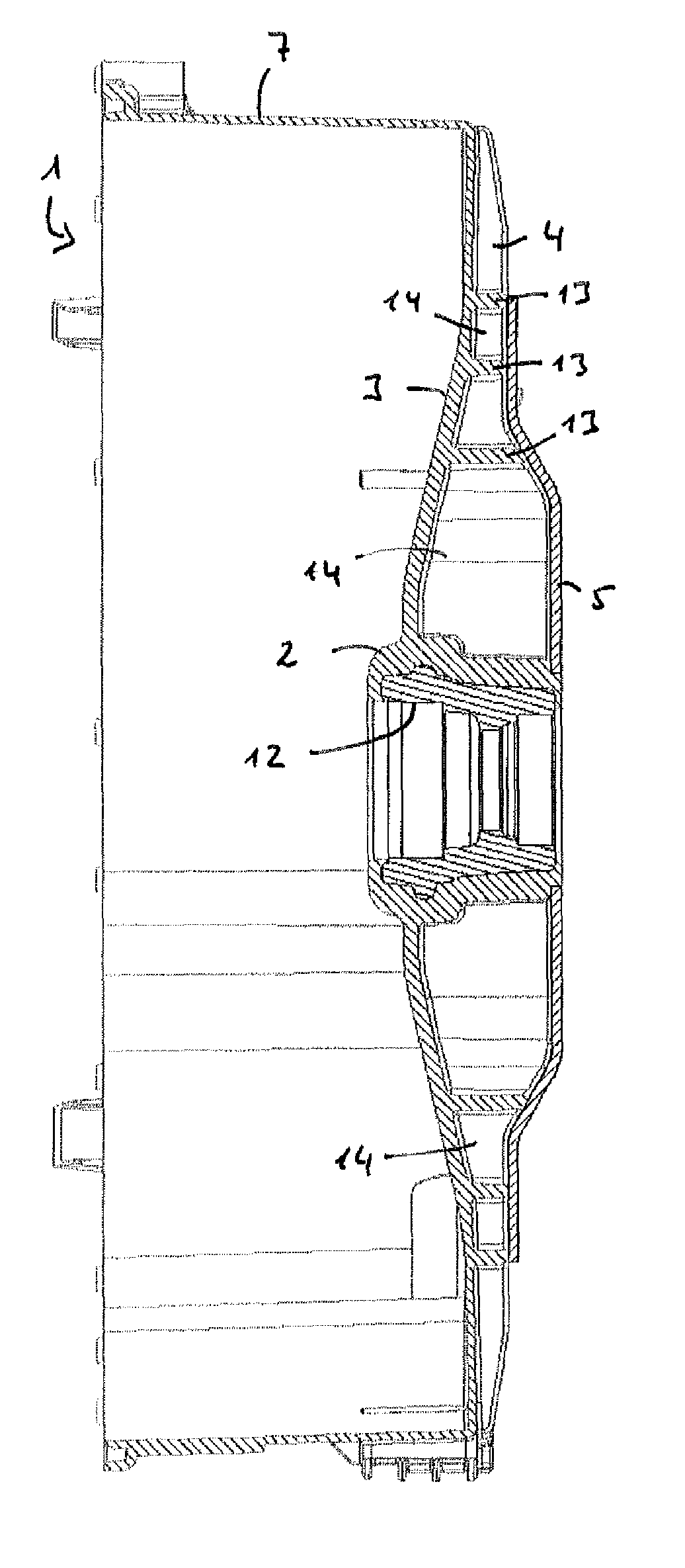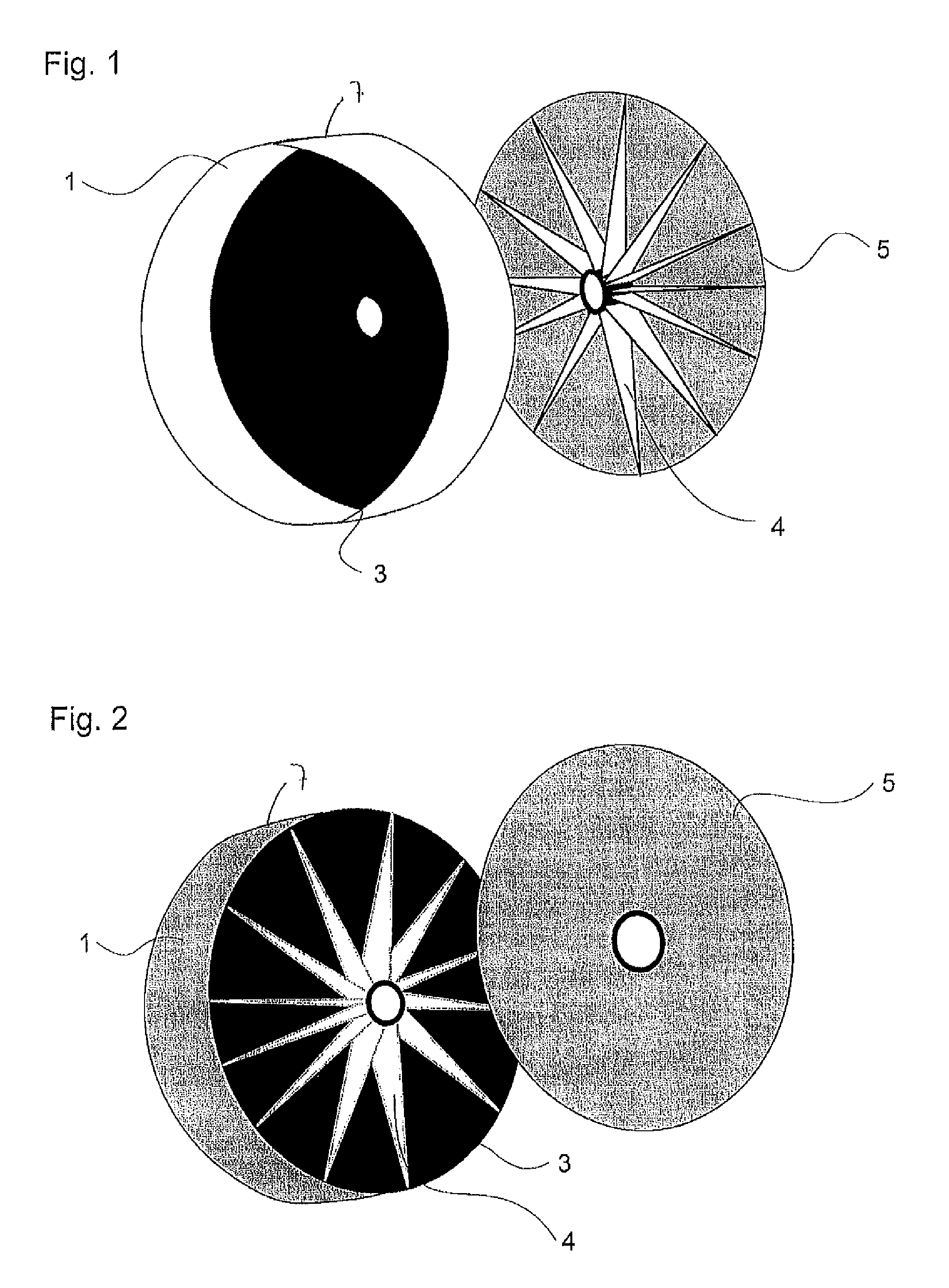Plastic suds tub for a washing machine or a washer/dryer
a technology for washing machines and tubs, applied in other washing machines, washing machines with receptacles, textiles and papermaking, etc., can solve the problems of high cost, inability to meet economic mass production, and inability to manufacture tubs with insert-molded support cross technology, etc., to achieve the effect of reducing the use of materials
- Summary
- Abstract
- Description
- Claims
- Application Information
AI Technical Summary
Benefits of technology
Problems solved by technology
Method used
Image
Examples
Embodiment Construction
[0042]FIG. 1 shows the rear part of a plastic tub 1 in a perspective view from the front. This component contains the end face wall 3 and is manufactured in one piece by injection molding. In a subsequent operation this component 1 is firmly connected to the cylinder of the tub 1 also made of plastic. Formed a centrally in the end face Wall 3 is a hollow-cylindrical cavity-free bearing mount 2. This is used to receive a fluid-tight bearing not shown in the figure for the drive shaft of a laundry drum also not shown in the figure arranged in the tub 1. The more detailed embodiment of the hollow-cylindrical bearing mount 2 is dictated by the correspondingly exact design of the bearing to be used, which is not of importance here. In any event the bearing mount 2 consists of compact plastic without cavities, since the bearing mount must accept the forces of the rotating washing drum possibly adversely affected by a load imbalance and must be accordingly be designed to accommodate stress...
PUM
 Login to View More
Login to View More Abstract
Description
Claims
Application Information
 Login to View More
Login to View More - R&D
- Intellectual Property
- Life Sciences
- Materials
- Tech Scout
- Unparalleled Data Quality
- Higher Quality Content
- 60% Fewer Hallucinations
Browse by: Latest US Patents, China's latest patents, Technical Efficacy Thesaurus, Application Domain, Technology Topic, Popular Technical Reports.
© 2025 PatSnap. All rights reserved.Legal|Privacy policy|Modern Slavery Act Transparency Statement|Sitemap|About US| Contact US: help@patsnap.com



